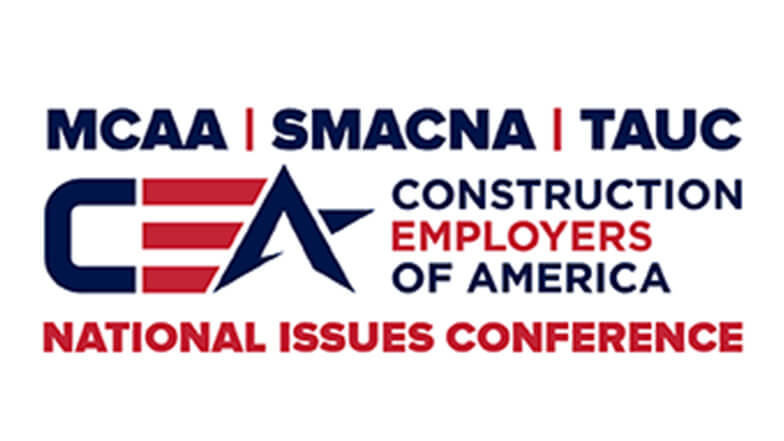Featured Resources

Change Orders, Productivity, Overtime—A Primer for the Construction Industry
This planning tool helps you determine the costs associated with unplanned events, circumstances and factors that may impact the outcome, productivity and schedule of construction projects. New for 2024: a chapter exploring the factors that contribute to BIM cost and time overruns.
Mental Health Awareness & Suicide Prevention Video
Our newest safety and health video highlights the success story of an industry veteran, with appearances from MCAA’s president Robert Beck, the UA’s Jen Massey, industry expert Dr. Sally Spencer Thomas, and MCAA member Ricky Reams.

WebLEM is the industry’s most reliable authority for comprehensive labor units for typical project tasks. Quickly search for and retrieve information. WebLEM is reviewed and updated to reflect the latest products and joining methods. You will need your MCAA.org username and password to log in to WebLEM. For WebLEM access questions, please refer to the WebLEM Access FAQs page.

National Service and Maintenance Agreement
The National Service and Maintenance Agreement is an agreement negotiated and administered by the United Association of Journeymen and Apprentices of the Plumbing and Pipefitting Industry (UA) and the Mechanical Service Contractors of America (MSCA) and is a signed contract between the UA and individual mechanical service contracting firms who apply and qualify. The Agreement is a nationally recognized tool that helps contractors provide quality, consistent service to their customers throughout the country and helps reclaim lost market share.
The 2025 MEP Innovation Conference in Los Angeles brought together over 700 attendees from the mechanical, electrical, and sheet metal trades. This marks another successful year of bringing together industry leaders, technology experts, and contractors focused on driving innovation.
The NCPWB Technical Conference is just around the corner! Don’t miss this exciting opportunity to learn, share, and connect. This year’s conference is packed with valuable content and unmatched opportunities to network with friends, colleagues, and new acquaintances. We’re also introducing for the first time, an exhibitor showcase on Monday afternoon where you can see the latest and greatest welding technologies. Don’t miss it – register today!
During the annual Safety & Health Conference in Fort Lauderdale, FL, MCAA and MILWAUKEE TOOL announced the winner of the 2024 Safety Professional of the Year as Sereno Steindl of Bassett Mechanical.
MCAA’s Field Leaders Conference is where field leaders realize their importance and value as professionals and members of the management team. When your field leaders join us in May, they will learn the skills they need to be business, and results, oriented managers focused on growing company profits and brand. Register them today!
MCAA’s Virtual Trade Show connects our contractor members with the members of MCAA’s Manufacturer/Supplier Council.
Join your friends and colleagues at the MCAA25 Closing Reception hosted by MILWAUKEE TOOL, the perfect prequel to the Closing Dinner & Concert. Remember to register for MCAA25 to be a part of this unforgettable evening.
The John R. Gentille Foundation (JRGF) Internship Grant program has been upgraded for 2025 to offer a new level of support for the multiple entities involved with developing the future talent of our industry.
As a business owner in the mechanical contracting industry, you already juggle enough—projects, workforce management, regulations, and keeping up with an ever-changing market. But what happens in Washington, D.C. directly impacts your bottom line. The CEA National Issues Conference is your chance to influence the policies affecting your business, rather than just reacting to them after they’re set. This is your chance to shape the future of the mechanical contracting industry. Don’t just watch the change—be part of it. Register today!
As part of its ongoing commitment to protecting your livelihood and setting the stage for a bright future, MCAA has secured the services of Longbow Public Policy Group to advise our MCAA Government Affairs Committee (GAC). GAC Chair, Jim Gaffney will be passing along information relative to our industry on a regular basis.
MCAA is conducting a nationwide survey on current customs and best practices to account for and mitigate BIM-related risks. This is a crucial and urgent issue for our industry, and we are committed to leading efforts that benefit our members and the industry as a whole. Your input is essential in ensuring the statistical validity of the results and helping us develop effective BIM risk strategies. Please take the time to complete the survey and contribute to this important initiative.
On February 6, 2025, Daniel Bunn, President & CEO of the Tax Foundation, provided an in-depth analysis of expected federal policy changes during the second Trump administration during an MCAA webinar. A recording of the session, which was moderated by Jim Gaffney and Chuck Daniel, is now available. Don’t miss this opportunity to gain valuable insights from a leading expert in the field.
Mechanical contractors face an uncertain insurance market. MCAA’s What is a Captive Insurance Plan/Group and What Can It Do For Your Company? explores the use of captive, or privately held, insurance as a way to mitigate risk and provide greater cost control relative to a contractor’s insurance premiums. It’s just one of MCAA’s educational resources that are free to MCAA members as a benefit of membership.
MCAA’s web-based labor estimating manual is an invaluable tool for your business. Free as a benefit of your membership.
WebLEM
Scholarships are just one way the John R. Gentille Foundation is investing in your industry’s future. Have you invested in it?
JRGF
You can make an impact on the future of your industry and your business by contributing to the MCAA Political Action Committee.
MCAA PAC
Looking for an intern? You can head to our improved student chapter website and check out the great resumes there!
MCAAGreatFutures
The year-round involvement of our manufacturer/supplier members is part of what makes MCAA special. Learn more about the Council and the value it brings to MCAA.












